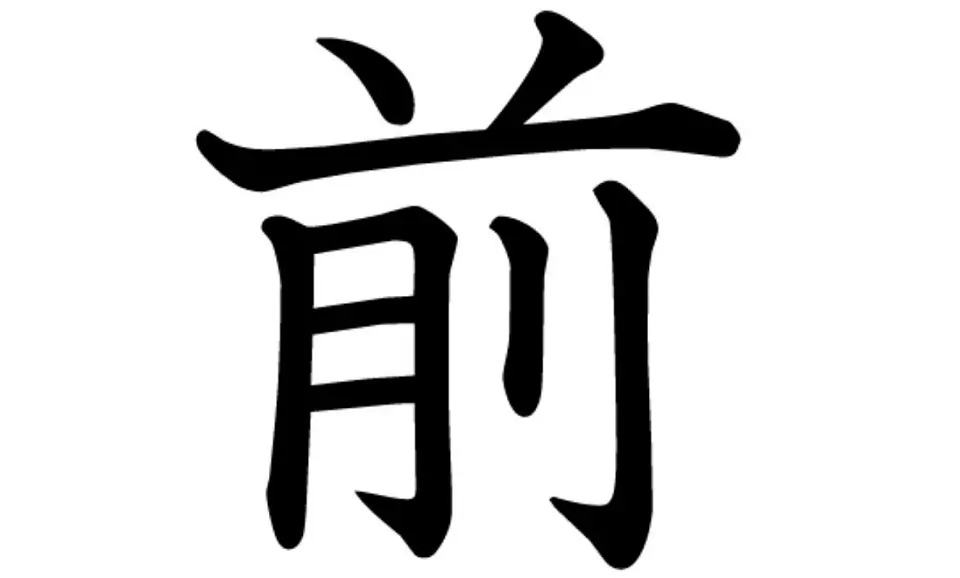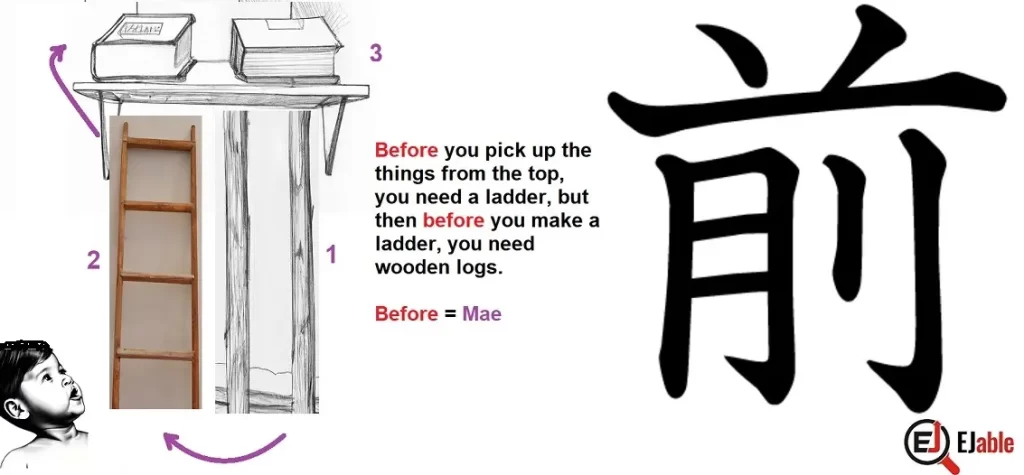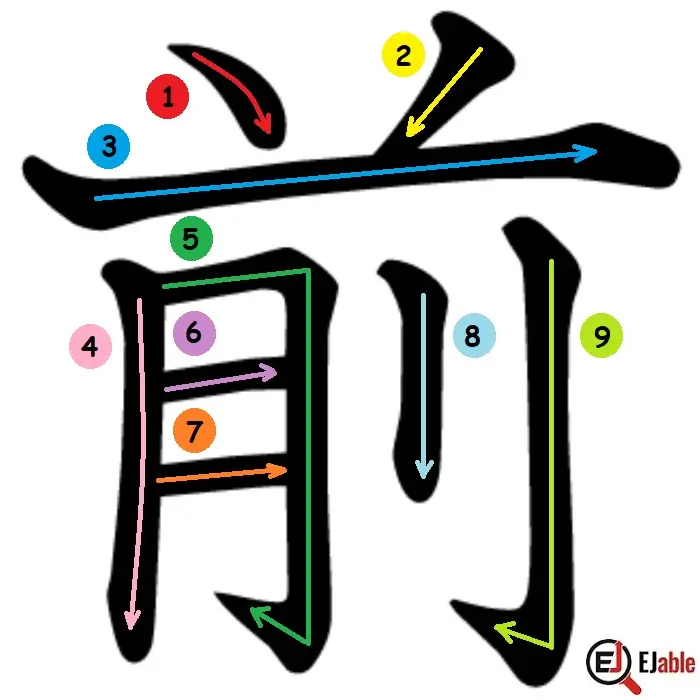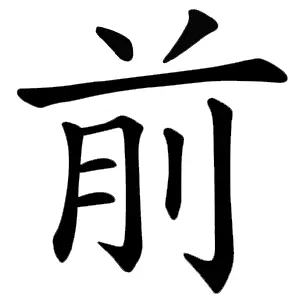Kanji for ‘Before’ or “In Front Of”: 前 (Mae)

The Japanese kanji for “before” or “In front of” is 前 (mae).
The pronunciation of the Kanji 前 is “mae” (まえ) in its kun’yomi (Japanese reading) and “zen” (ゼン) in its on’yomi (Chinese reading). The shape of this kanji is rather simple, and its shape has a clear origin. However, the pronunciations can change based on the word the kanji is used in.
The Kanji 前 is constructed with 9 strokes. It is part of the JLPT N5 syllabus (please check the JLPT N5 Kanji list) and is taught in grade 2 in Japanese schools.
Please note that the origin of this Kanji does not have any way to remember it easily. Therefore, I will present a simple way to memorize the Kanji for ‘Mae’.
Origin of the Shape of the Kanji 前
The character 前 meaning “Before,” is a compound of three simpler elements:
- 刖 (a radical often related to cutting)
- 月 (which in this context is a form of the Kanji radical 肉 meaning flesh, and not the one that means moon)
- The horizontal line at the top with two smaller lines in the middle
月 and 刖 Components in the Character 前
Interestingly, the original form of 刖 depicted a foot being cut off at the ankle. This graphic character was used to represent a form of punishment in ancient China.
Meanwhile, the character 月 in this context, when it’s on the left side of a kanji, often represents the human body or a part of it.
Combined, the elements depict the idea of cutting off the front part of the foot. This may seem gruesome, but it’s useful to note that body parts are often used metaphorically in many languages. In this case, the part of the body that usually moves forward first when walking (the front of the foot) represents the concept of “before” or “front”.
Top Horizontal Line with Two Small Lines in the Middle.
Part “一” simply means “one” in its most common use, but in the case of 前, it doesn’t directly relate to its meaning of “before” or “in front.” Instead, it serves as a structural component of the kanji.
In many kanji, individual parts may not contribute to the overall meaning. Instead, they often contribute to a more abstract representation. In this case, the combination of 刖 and 月 contributes more directly to the overall meaning of “before” or “in front of”, while the 一 component is structural.
A way to remember it could be: when you’re walking, the “front” part of your foot (or the part that goes “before” the rest) is what moves you forward. This is a bit of a stretch. However, sometimes, mnemonic devices that seem a little bizarre can be easier to remember. As always, the development of kanji is complex, and this is a simplified explanation.
Mnemonic: How to Remember the Kanji for “Before”
As is the case with many Kanji characters, the recorded origin cannot tell us the real reasons behind the shape of the Kanji. So, the following is a way to remember and recall the Kanji 前 for “Before” or “In front of”:

The above picture is sufficient for the explanation of memorizing this Kanji, but just for a written reference:
- Consider that there is an overhead rack with a couple of items that are beyond reach, and you need to pick those.
- BEFORE you pick up those items, you need to have a ladder.
- However, BEFORE you can make a ladder, you need wooden logs to make it.
If you remember the “Before” for one activity you must do to achieve something, that logic would make you remember the Kanji 前, representing the concept of “in front of” or “before.”
Stroke Order for the Kanji 前
The following illustrations show the stroke order to write the Kanji 前, meaning “Before”:


Usage of Kanji 前 in Japanese Language
The Kanji 前, meaning before or in front of, is used as a component in 15 other Kanji characters. However, only one of these is Jōyō Kanji (commonly used Kanji), which is 煎. The Kanji 煎 means セン (boil) or いる (to fry).
Moreover, there are 361 Japanese words that begin with the Kanji 前, and it appears in 664 words. The Kanji 前 also appears in 3573 Japanese names.
Do check other Kanji characters on the page “How to Remember Kanji“.

A long-term ex-pat in Japan, Himanshu comes with an IT background in SAP consulting, IT Business Development, and then running the country operations of an IT consulting multinational. Himanshu is the co-founder and Managing Director of ReachExt K.K. and EJable.com. He is also an Advisory Board Member of a Silicon Valley AI/IoT startup.
